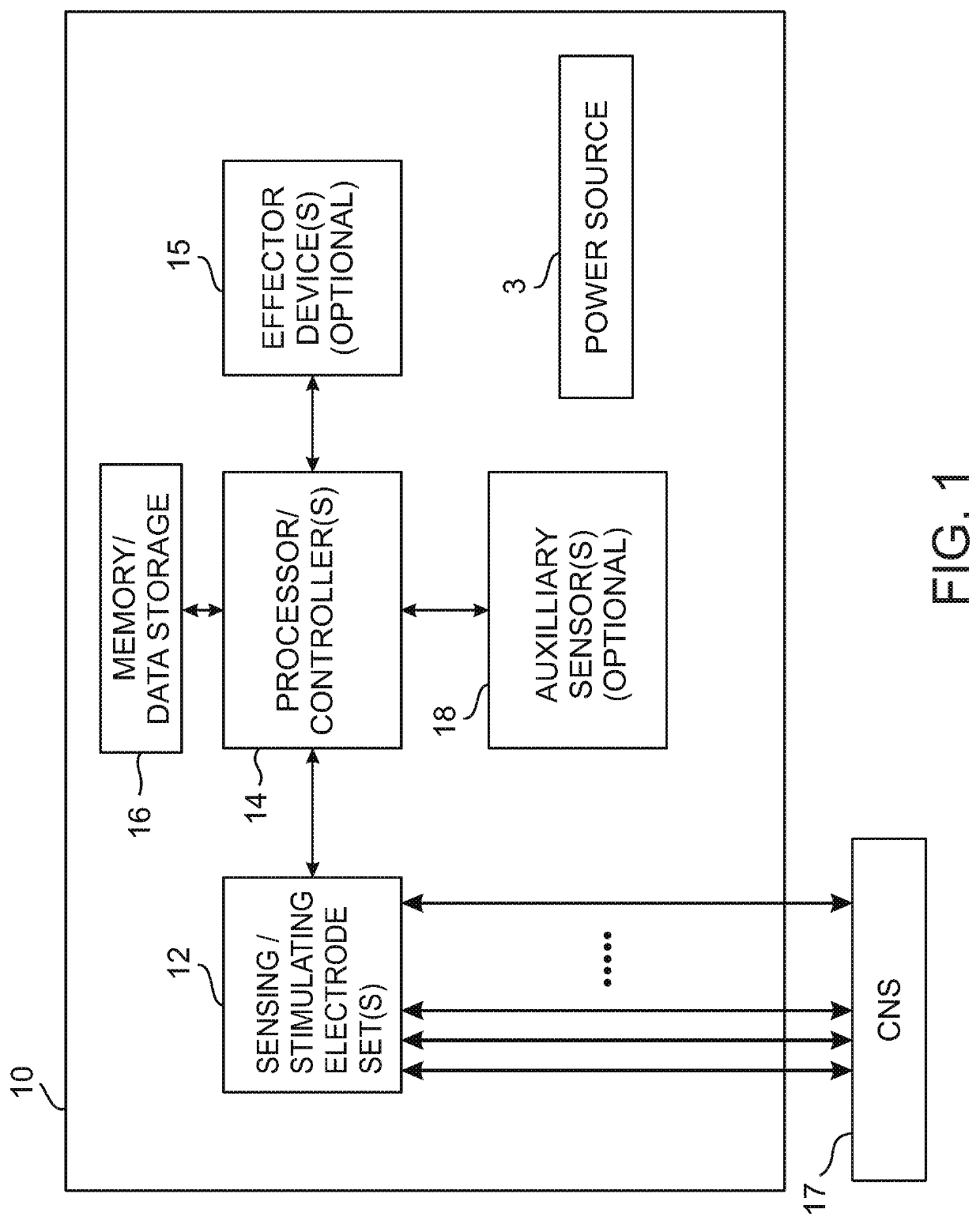Brain computer interface systems and methods of use thereof
- Summary
- Abstract
- Description
- Claims
- Application Information
AI Technical Summary
Benefits of technology
Problems solved by technology
Method used
Image
Examples
Embodiment Construction
[0119]Abbreviations:
[0120]The following abbreviations are used throughout the specification and the claims of the present application:
[0121]ADD—Attention Deficit Disorder (presently this term has been replaced in the literature by the term “Predominantly inattentive presentation—IA” which is equivalent thereto)
[0122]ADHD: Attention Deficit Hyperactivity Disorder.
[0123]BA: Brodmann Area
[0124]BCI: Brain Computer Interface.
[0125]DBS: Deep brain stimulation.
[0126]DLPFC: Dorsolaterl prefrontal cortex
[0127]DSP: Digital signal processor.
[0128]Ecog: Electrocorticogram.
[0129]Ecog BCI: Electrocorticographic brain computer interface.
[0130]EPROM: Electrically programmable read only memory.
[0131]EEPROM: Erasable electrically programmable read only memory.
[0132]FMRI: Functional Magnetic resonance imaging.
[0133]GUI: Graphic User Interface.
[0134]5 HT: 5 hydroxytriptamine.
[0135]Hz: Hertz
[0136]IC: Integrated Circuit
[0137]ICTIS: intracranial temporal interference stimulation
[0138]IFG: Inferior frontal...
PUM
 Login to View More
Login to View More Abstract
Description
Claims
Application Information
 Login to View More
Login to View More - R&D
- Intellectual Property
- Life Sciences
- Materials
- Tech Scout
- Unparalleled Data Quality
- Higher Quality Content
- 60% Fewer Hallucinations
Browse by: Latest US Patents, China's latest patents, Technical Efficacy Thesaurus, Application Domain, Technology Topic, Popular Technical Reports.
© 2025 PatSnap. All rights reserved.Legal|Privacy policy|Modern Slavery Act Transparency Statement|Sitemap|About US| Contact US: help@patsnap.com



